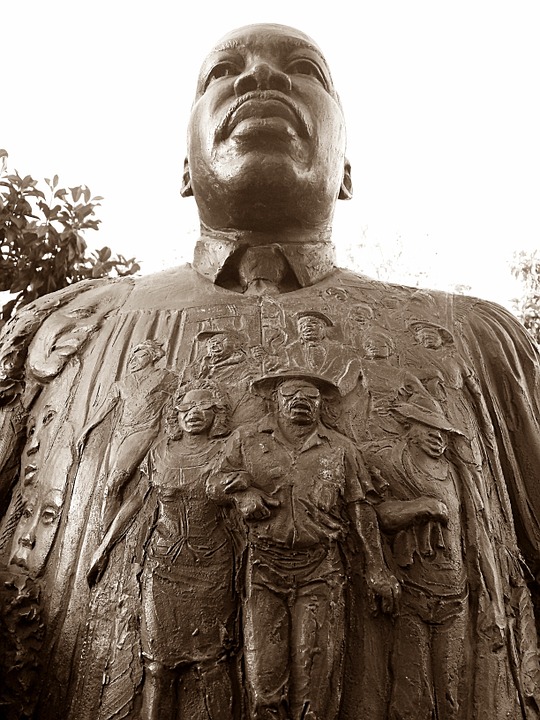The Complete History Of The ADA
The Americans with Disabilities Act (ADA)
The Americans with Disabilities Act (ADA) was officially signed into federal law on July 26th, 1990 on the White House lawn. President George H.W. Bush was accompanied by the first lady, Barbara Bush, and an eclectic mix of disability rights activists, members of the Administration, people with disabilities of all types, and of course, members of the press.
At the event, President Bush signed the Americans with Disabilities Act, which prohibits discrimination against people with disabilities in the public sector. This civil rights legislation covers employment discrimination and removes barriers to equal access to public accommodations to people with disabilities.
It is a landmark event in the history of civil rights and equality for everyone in America.
Civil Rights Act

The historical event has its origins in the Civil Rights Movement, most active from 1954 - 1968, during which time the African American community and other minorities such as women fought for equal rights and against discrimination in the United States.
Martin Luther King Jr. led many civil rights movements or marches that fought for abolishing segregation and the civil rights protections finally won in 1964 with the Civil Rights Act, which also prohibits discrimination based on ethnic origin, race, religion, or gender.
This civil rights legislation was the crucial foundation for the Americans with Disabilities Act, which models itself after the Civil Rights Act in language and basic equal opportunity rights defined.
A Movement Perspective

The Civil Rights Act gave the country a new perspective on equality and was also the origin of motivation for the disability rights movement. More federal legislation with the Fair Housing Act in 1968 brings into question independent living issues vs. being institutionalized, for people with disabilities, and others.
Legislation concerning non-discrimination contained inevitable consequences due to continued biases. It mobilized the disability community to start making changes in multiple ways, causing the country to sit up and take notice. It was a time for a change.
The Rehabilitation Act and Section 504

In 1973, the Rehabilitation Act was passed, and carefully crafted from a legal perspective was Section 504. The Rehabilitation Act (and Section 504 in particular) were monumental for the disability community.
For the first time, Congress recognized the economic status of people with disabilities as a minority group. Exclusion and segregation of people with disabilities would therefore become seen as discrimination, from that point forward.
This in turn opened the door to removing societal barriers, protecting basic civil rights, and everything that has occurred since, for the community as a whole.
The rest of the Rehabilitation Act had to do with federal funds and federal guidelines, and prohibited discrimination of people with disabilities in federal programs or programs receiving federal financial assistance, as well as in federal employment.
Education Acts

The next step, naturally, was education. The Education for All Handicapped Children Act, now called IDEA (Individuals with Disabilities Education Act), was originally passed in 1975. This legislation states that, first, schools must actively screen for students who may have physical or mental limitations which qualify as a disability.
Second, for any children found, a free public education "in the least restrictive environment possible," will be tailored to their individual and special needs, and be provided. There are other provisions, as well.
The Reagan Administration

Despite all the advances made for people with disabilities up to this point, in the early 1980s, the Reagan Administration announced the formation of something called the Regulatory Relief Task Force, to be headed up by then-Vice President, George Bush. The purpose was to deregulate regulations "too burdensome" for businesses.
Section 504 was one of the first chosen for deregulation by this effort. However, each time a piece or portion of it was scrutinized, for 2 long years, disability rights representatives met with Administration officials and explained why it was all equally and quite necessary until they finally halted their efforts.
The Civil Rights Restoration Act

In March of 1988, Congress overrode a veto from President Reagan of the Civil Rights Restoration Act. The Act had been written mainly to correct several negative Supreme Court decisions that had consequently affected multiple areas within state and local governments, as well as the private sector of business.
These affected areas were civil rights issues that would go unchecked if not lawfully clarified at that time. Since the Disability Rights Movement had come so far, as well as civil rights themselves, all parties worked together to ensure their place was firmly established within the Supreme Court, instead.
The ADA's 2010 Standards for Accessible Design

After the 1990 passing of the Americans with Disabilities Act, those with either mental illness or physical disabilities did not have to worry about being segregated, excluded, or discriminated against by society. Barriers have largely been removed from all public accommodations or businesses, including state and local government entities.
In 2010, standards for accessible design were finally completed, which contain very specific guidelines for a highly consistent architectural design that people with disabilities can depend on.
The ADA Today
Today, the ADA has effectively changed the way we function as a society, shaped a new belief system that does not tolerate exclusion for the disabled, and literally changed the architecture of our society.
All new commercial construction from 2011 forward is designed with these standards in place. ADA compliance is mandatory for nearly every business and punishable by federal law.
ADA Central
One of the most important and common ADA violations is improper signage. Here at ADA Central, we have a huge stock inventory of required ADA signs such as medical signs, plus we make custom ADA-compliant signage. You can even check expedited service if necessary, and we can answer any questions regarding ADA guidelines you may have. We do the highest quality work around, so contact us today!
Previous article: Common ADA Violations To Avoid

